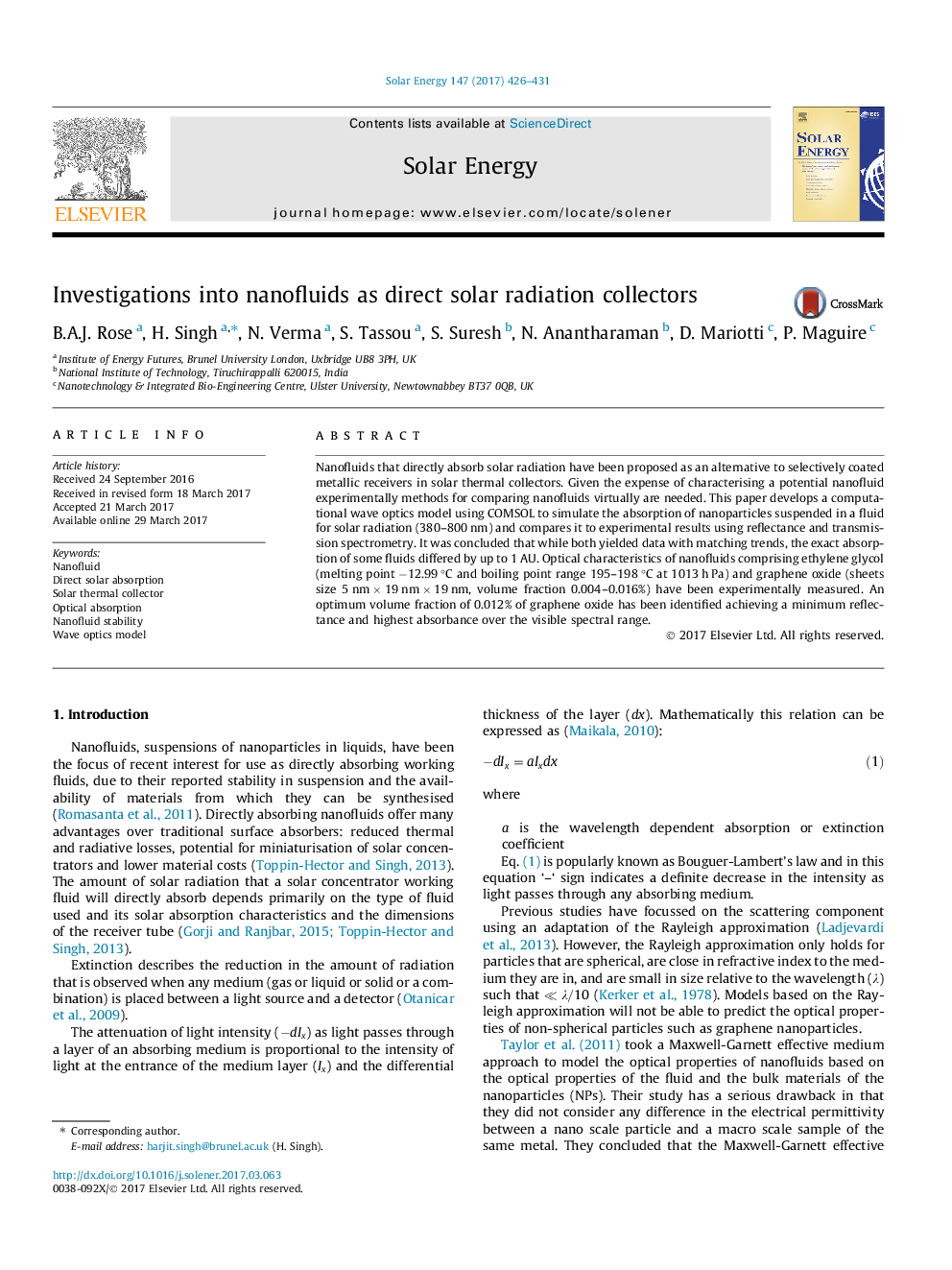| Article ID | Journal | Published Year | Pages | File Type |
|---|---|---|---|---|
| 5451221 | Solar Energy | 2017 | 6 Pages |
Abstract
Nanofluids that directly absorb solar radiation have been proposed as an alternative to selectively coated metallic receivers in solar thermal collectors. Given the expense of characterising a potential nanofluid experimentally methods for comparing nanofluids virtually are needed. This paper develops a computational wave optics model using COMSOL to simulate the absorption of nanoparticles suspended in a fluid for solar radiation (380-800 nm) and compares it to experimental results using reflectance and transmission spectrometry. It was concluded that while both yielded data with matching trends, the exact absorption of some fluids differed by up to 1 AU. Optical characteristics of nanofluids comprising ethylene glycol (melting point â12.99 °C and boiling point range 195-198 °C at 1013 h Pa) and graphene oxide (sheets size 5 nm Ã 19 nm Ã 19 nm, volume fraction 0.004-0.016%) have been experimentally measured. An optimum volume fraction of 0.012% of graphene oxide has been identified achieving a minimum reflectance and highest absorbance over the visible spectral range.
Related Topics
Physical Sciences and Engineering
Energy
Renewable Energy, Sustainability and the Environment
Authors
B.A.J. Rose, H. Singh, N. Verma, S. Tassou, S. Suresh, N. Anantharaman, D. Mariotti, P. Maguire,
